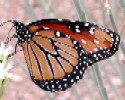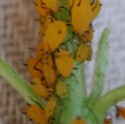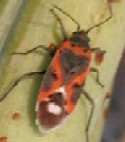Hartweg's Climbing Milkweed
Fringed Twinevine
Funastrum heterophyllum
(Sarcostemma cynanchoides var. hatwegii)
Sponsored Links:
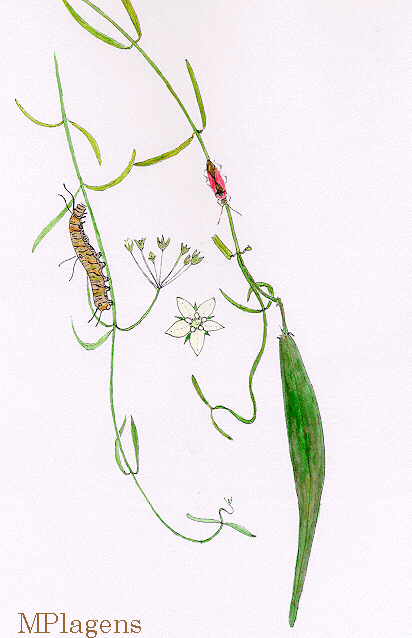
This watercolor was made based on a specimen found at Cottonwood Wash, Four Peaks, Maricopa Co., AZ, on 12 Sept. 1992. The caterpillar is the immature stage of the Queen Butterfly and the red and black bug is a Small Milkweed Bug -- Lygeaus kalmii.
Sponsored Links:
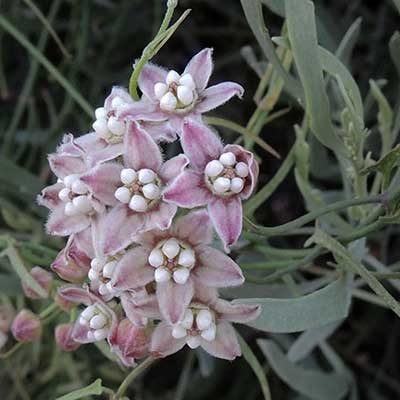
Observed in Glendale, Arizona. 2 May 2017.
VINE: Woody vine with slender, wiry stems supported by trees, shrubs, or
very often fences. Milky sap that can cause skin irritation rapidly exudes
from any broken stem.
FLOWERS: Distinctive, star-shaped flowers are arranged in umbels and are
white with tinges of purple and burgandy.
FRUIT: Turgid, slightly curved pods are packed with comose (hairy)
seeds. Mature seeds are carried by winds to new locations.
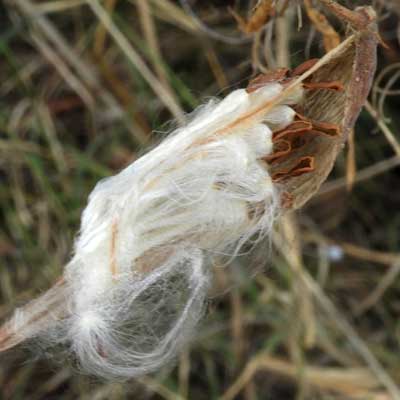
LEAVES: Elongate, arrow-shaped to linear leaves are borne in pairs along
the stems (opposite) and are not densely hairy.
RANGE: Frequent along washes and fence rows throughout the Sonoran
Desert of Arizona. It is one of the most common vines volunteering on fences in
the cities. The wind dispersed seeds can arrive from far away and are lodged
against the fence before germinating. On the fence the escape lawn mowers and
power weed-wackers.
Milkweed vines in the Sonoran Desert have undergone many name changes, varietal names, species splits and combinations. They all seem closely related varying in leaf shape and the degree of hirsuteness.
Most aphid species are greenish, however, the most common species found on members of the milkweed family are bright orange-yellow. Clusters of 10 to 50 are frequently found on new shoots or on the developing flower buds and fruits. These insects have come to be known as the Oleander Aphid since they are an occasional pest of this exotic ornamental (a member of the related and sometimes included family, Apocynoideae).
Another frequently encountered insect on milkweeds are the brightly colored black and red Milkweed Bugs Whereas the aphids are rather immobile, these true bugs can quickly withdraw their piercing-sucking mouthparts and run or fly if disturbed. If fruits are present, this is where the bugs' feeding will be concentrated.
Still another strikingly colored insect, the Queen Butterfly (Danaus gillipus) uses this and other milkweeds as its larval host. That many of these insects are strikingly colored is not a coincidence. Many milkweeds have cardiac poisons in their sap that if ingested by birds or mammals can cause sickness or death. Many milkweed-feeding insects can store these poisons in their own bodies without harm to themselves while gaining protection from insectivorous birds and mammals. The colors serve as warning that they are dangerous for insectivores to eat.
